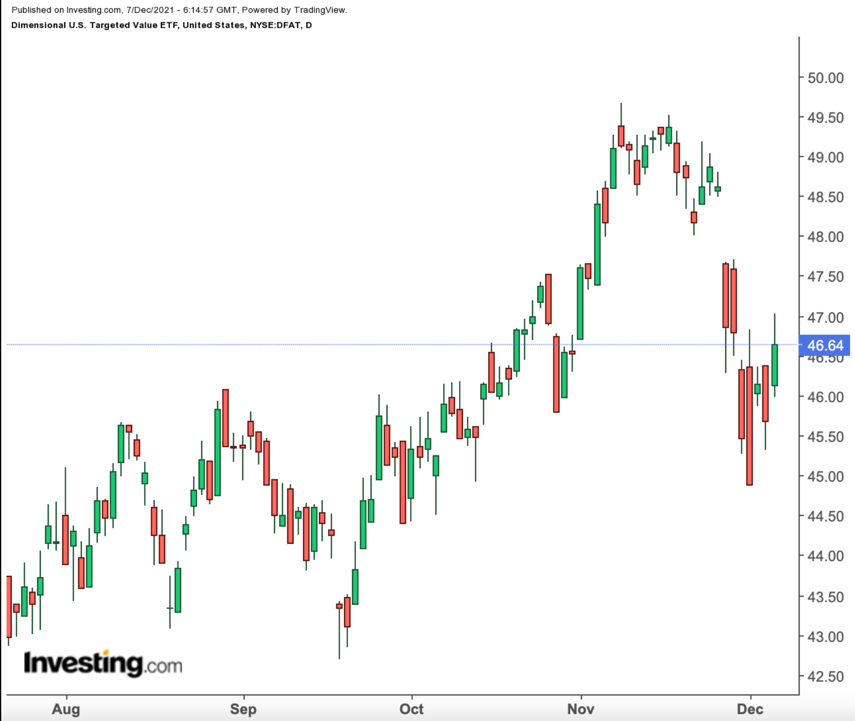Exchange-traded funds (ETFs) have been gaining popularity in recent years and as investors' appetite grows for these investment instruments, asset managers are converting more and more mutual funds to ETFs.
In recent months, Dimensional Fund Advisers, Guinness Atkinson, and Adaptive Investments have converted a number of their mutual funds. Similarly, JP Morgan has recently announced plans of moving several mutual funds into the ETF category to gain access to this rapidly expanding market.
Recent metrics from the Washington, DC-based Investment Company Institute (ICI) suggest:
“Assets of all exchange-traded funds rose in October by $378.30 billion, or 5.7 percent, to $6.96 trillion. Over the past 12 months, ETF assets increased $2.28 trillion, or 48.6 percent.”
Investors typically find ETFs more attractive than mutual funds because they are easier to trade. As well, there are potential tax advantages in some jurisdictions. In addition, most ETFs are cheaper to own in terms of annual fees.
Therefore, today we take a look at two recently converted ETFs that could appeal to readers searching for alternative investment tools to diversify portfolios.
1. Dimensional US Targeted Value ETF
- Current Price: $46.64
- 52-Week Range: $41.29 - $49.67
- Dividend Yield: 0.96%
- Expense Ratio: 0.34% per year
The Dimensional US Targeted Value ETF (NYSE:DFAT) was previously known as the Tax-Managed US Targeted Value Portfolio run by Dimensional Fund Advisors. The mutual fund first started trading in December 1988, and it was listed as an ETF in June 2021. It is an actively managed fund with exposure to mid and small-cap value US stocks.

DFAT, which tracks the Russell 2000 Value Index, has around 1600 holdings. The top ten names account for 7.4% of the net assets of $6.4 billion.
Leading stocks on the roster include specialty contracting services and infrastructure solutions provider Quanta Services (NYSE:PWR); financial services group Athene Holding (NYSE:ATH), which focuses on retirement savings products; electronics and semiconductors distributor Arrow Electronics (NYSE:ARW); Reliance Steel & Aluminum (NYSE:RS), which distributes thousands of metal products; and Darling Ingredients (NYSE:DAR), which offers recycling solutions to food companies.
The fund is weighted towards financials (29%), followed by industrials (21.96%), consumer discretionary (14.83%), information technology (8.32%) and materials (8.04%).
On June 14, DFAT started trading at $46.39 so it is currently flat. Its price-to-book (P/B) ratio stands at 1.58x. Potential investors could consider buying around $44.
2. SmartETFs Dividend Builder ETF
- Current Price: $25.66
- 52-Week Range: $23.59 - $26.79
- Dividend Yield: 1.89%
- Expense Ratio: 0.65% per year
The SmartETFs Dividend Builder ETF (NYSE:DIVS) invests in businesses that have maintained consistent dividend payments over a period of three to five years. In March 2012, this actively-managed fund was initially listed as a mutual fund known as the Guinness Atkinson Dividend Builder Fund. It started trading as an ETF at the end of March 2021.

DIVS, which has a portfolio of 35 equally-weighted holdings, follows the MSCI World Index. More than 50% of the portfolio is in US equities. Second in line are companies from the UK (15%), followed by Switzerland (9%), France (5%), and Germany (5%).
In terms of the sectoral breakdown, we see pharmaceuticals (12%), electronic components and semiconductor (6%), aerospace/defense (6%), diversified manufacturing (5%), and food-misc./diversified (5%) shares. The top 10 holdings comprise around a third of net assets of $25.4 million.
Among the leading names are Denmark-based global healthcare group Novo Nordisk (CSE:NOVOb) (NYSE:NVO); Microsoft (NASDAQ:MSFT); insurance brokerage services provider Arthur J Gallagher & Co (NYSE:AJG), asset management giant BlackRock (NYSE:BLK); and Paychex (NASDAQ:PAYX), which provides integrated human capital management (HCM) solutions.
DIVS started trading shy of $24 and returned about 11% since inception. We like the diversity of the fund and believe it deserves to be on investors’ radar. A potential decline toward the $24 level would improve the margin of safety.
